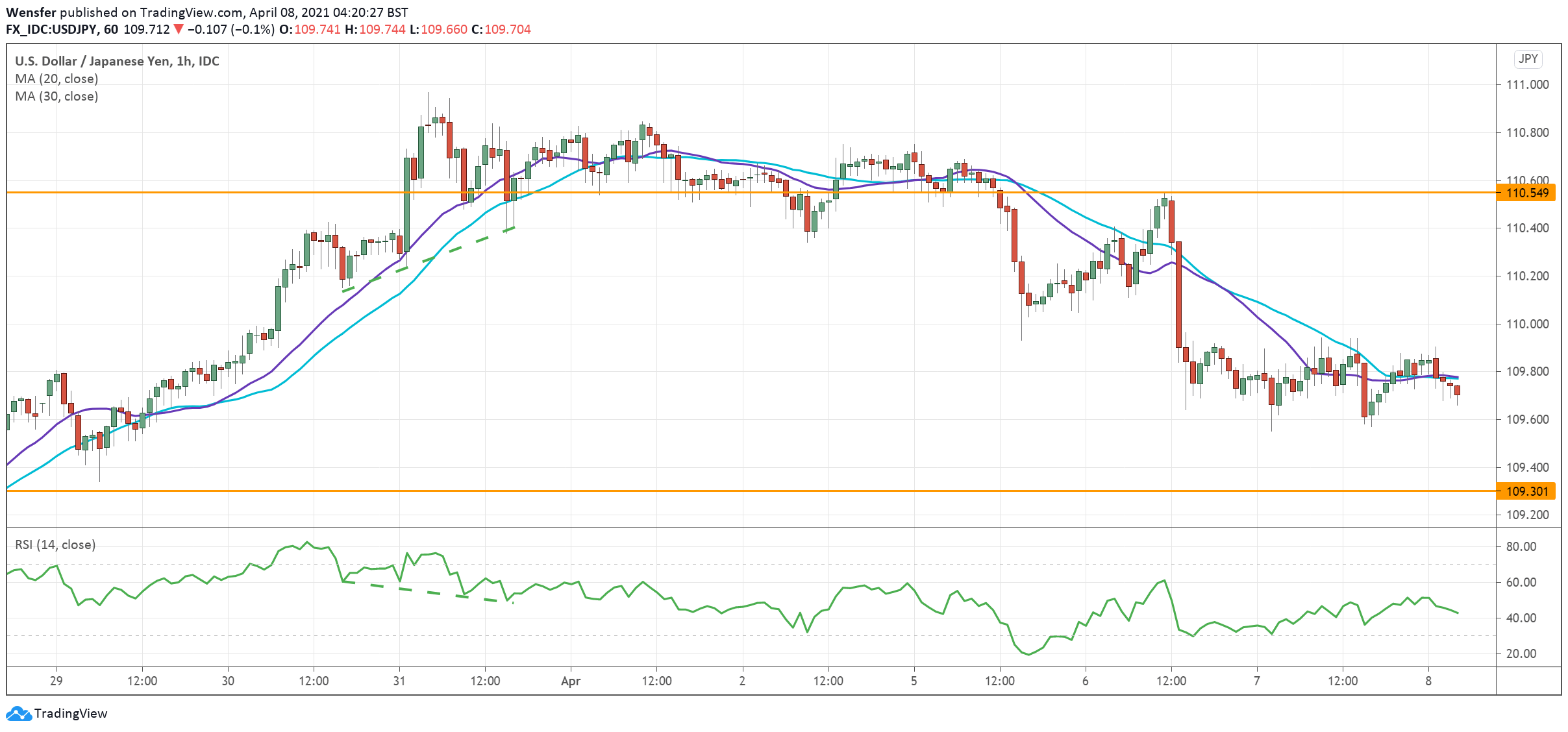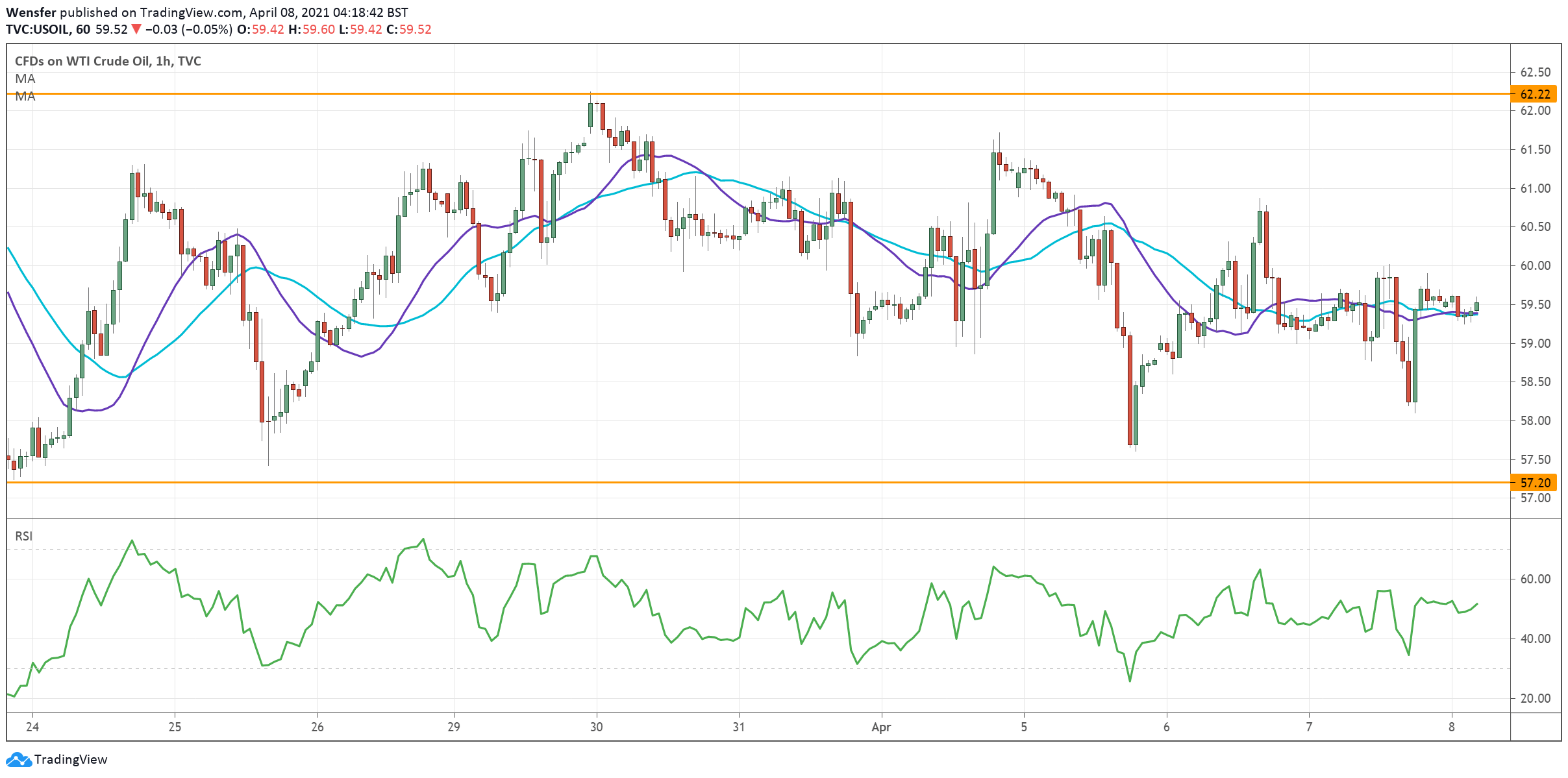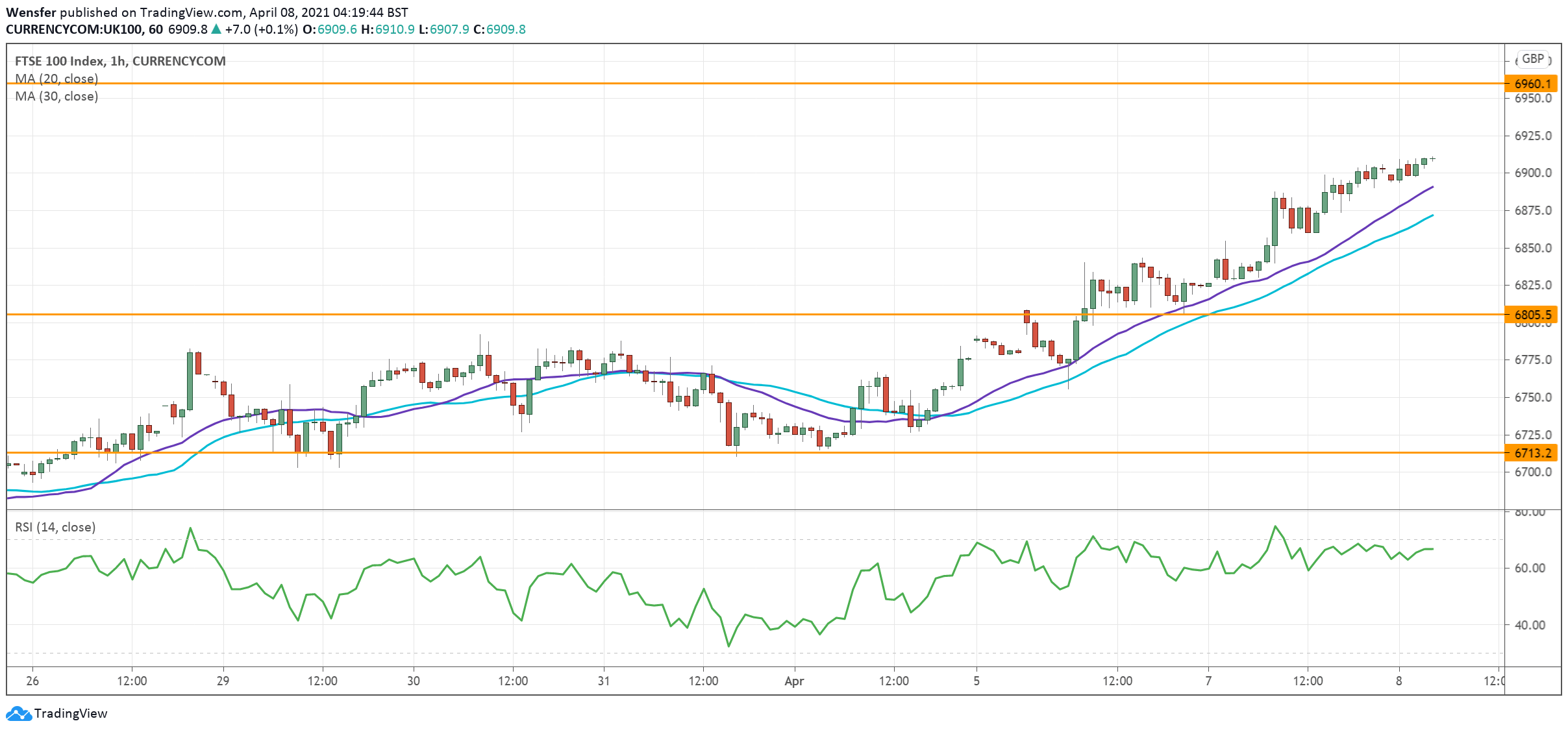USD/JPY continues to pull back
The US dollar struggles to find buyers amid dovish FOMC minutes.
The pair has met stiff selling pressure near the psychological level of 111.00 from last March. An RSI divergence was an indication that the rally was already losing steam.
A breakout below 109.30 could trigger a deeper correction to the demand area between 108.40 and the 30-day moving average found on the daily chart.
A rebound will need to lift offers around 110.55 first before more buyers would commit their chips.
US oil awaits breakout
Oil prices came under pressure after data showed an increase in US oil production at the end of March.
The upbeat sentiment has softened after the US crude dipped below the 20 and 30-day moving averages for the first time in four months. The bearish MA cross may attract more sellers.
On the hourly chart, the price action is currently in a rectangle consolidation between 57.20 and 62.20.
A bearish breakout could trigger a broader sell-off towards 52s, while 64.70 would be the immediate target on the upside.
UK 100 tests major resistance
The FTSE 100 has reached a three-month high after Boris Johnson confirmed that the UK’s economy would reopen next week.
The index is rising along the 20-hour moving average and is heading towards the previous high at 6960. A breakout above that major resistance could open the door to the pre-covid level (7400).
The RSI has entered the overbought area and may draw a temporary pullback. In this case, the resistance-turned-support 6805 would be the level to watch for trend followers.
This market forecast is for general information only. It is not an investment advice or a solution to buy or sell securities.
Authors' opinions do not represent the ones of Orbex and its associates. Terms and Conditions and the Privacy Policy apply.
Trading foreign exchange on margin carries a high level of risk, and may not be suitable for all investors. Before deciding to trade foreign exchange, you should carefully consider your investment objectives, level of experience, and risk appetite. There is a possibility that you may sustain a loss of some or all of your investment and therefore you should not invest money that you cannot afford to lose. You should be aware of all the risks associated with foreign exchange trading, and seek advice from an independent financial advisor if you have any doubts.
Recommended Content
Editors’ Picks
AUD/USD jumps above 0.6500 after hot Australian CPI data

AUD/USD extended gains and recaptured 0.6500 in Asian trading, following the release of hotter-than-expected Australian inflation data. The Australian CPI rose 1% in QoQ in Q1 against 0.8% forecast, providing extra legs to the Australian Dollar upside.
USD/JPY hangs near 34-year high at 154.88 as intervention risks loom

USD/JPY is sitting at a multi-decade high of 154.88 reached on Tuesday. Traders refrain from placing fresh bets on the pair as Japan's FX intervention risks loom. Broad US Dollar weakness also caps the upside in the major. US Durable Goods data are next on tap.
Gold price cautious despite weaker US Dollar and falling US yields

Gold retreats modestly after failing to sustain gains despite fall in US Treasury yields, weaker US Dollar. XAU/USD struggles to capitalize following release of weaker-than-expected S&P Global PMIs, fueling speculation about potential Fed rate cuts.
Ethereum ETF issuers not giving up fight, expert says as Grayscale files S3 prospectus

Ethereum exchange-traded funds theme gained steam after the landmark approval of multiple BTC ETFs in January. However, the campaign for approval of this investment alternative continues, with evidence of ongoing back and forth between prospective issuers and the US SEC.
US versus the Eurozone: Inflation divergence causes monetary desynchronization

Historically there is a very close correlation between changes in US Treasury yields and German Bund yields. This is relevant at the current juncture, considering that the recent hawkish twist in the tone of the Fed might continue to push US long-term interest rates higher and put upward pressure on bond yields in the Eurozone.


